
Asiatic black bear_U thibetanus_Russian Far East_S Kolchin
Ursus thibetanus
Asiatic black bears, also called Asian black bears, moon bears, or Himalayan black bears, range from Iran across the Himalayan foothills to Southeast Asia, north through China to the Russian Far East. They are the closest ecological counterpart to American black bears. However, unlike American black bears, which are thriving across their range, Asiatic black bears are declining in most parts of their range, due to uncontrolled illegal hunting and loss of forest habitat.
Hunting is a primary threat because the bile (gallbladder) of these bears is a sought-after Traditional Medicine, with a long history, and proven effectiveness for some ailments. Additionally, this species is often killed in conflicts with people, when damaging crops, depredating livestock, or attacking people.
Taxonomy: Ursus thibetanus [G. Baron Cuvier, 1823]: This species was named thibetanus because it was originally thought to live mainly in Tibet, although the first scientific specimen was from Nepal (Tibet is actually a fringe part of its range). [See separate page: Discovering and Naming Bear Species for Science.] At a time when all bear species were classified in separate genera, this species was in the genus Selenarctos, meaning moon bear (because of the crescent moon-shaped marking on its chest). Seven subspecies have traditionally been recognized, some of which have been corroborated as distinct genetic clades: U. t. ussuricus (Russian Far East, northeast China, Korean peninsula); U. t. japonicus (Japan); U. t. formosanus (Taiwan); U. t. mupinensis (central China); U. t. thibetanus (Nepal, India, Southeast Asia). Recently the so-called “Baluchistan bear” (Asiatic black bears in the unique, isolated Baluchistan region of Iran and Pakistan [U. t. gedrosianus]) was found not to be genetically distinct from the nominal subspecies in Nepal.
Distinctive characteristics: This is a medium-sized black-colored bear with distinctively large rounded ‘Mickey Mouse’ ears, normally with ruff of long hair around the neck and white crescent-shaped marking on the chest. The ruff and chest-marking are similar to the sloth bear, but this species can be differentiated from the sloth bear in having a darker and shorter muzzle with typically a white chin marking, and shorter darker claws; it is also distinct from the sun bear in that the lighter hairs on the muzzle do not extend to the eyes. Body size (especially leg length) and hair length vary a great deal geographically.

Asiatic black bear_U thibetanus_SE Asia rescue center_displaying white chest blaze, ruff, white chin_Animals Asia
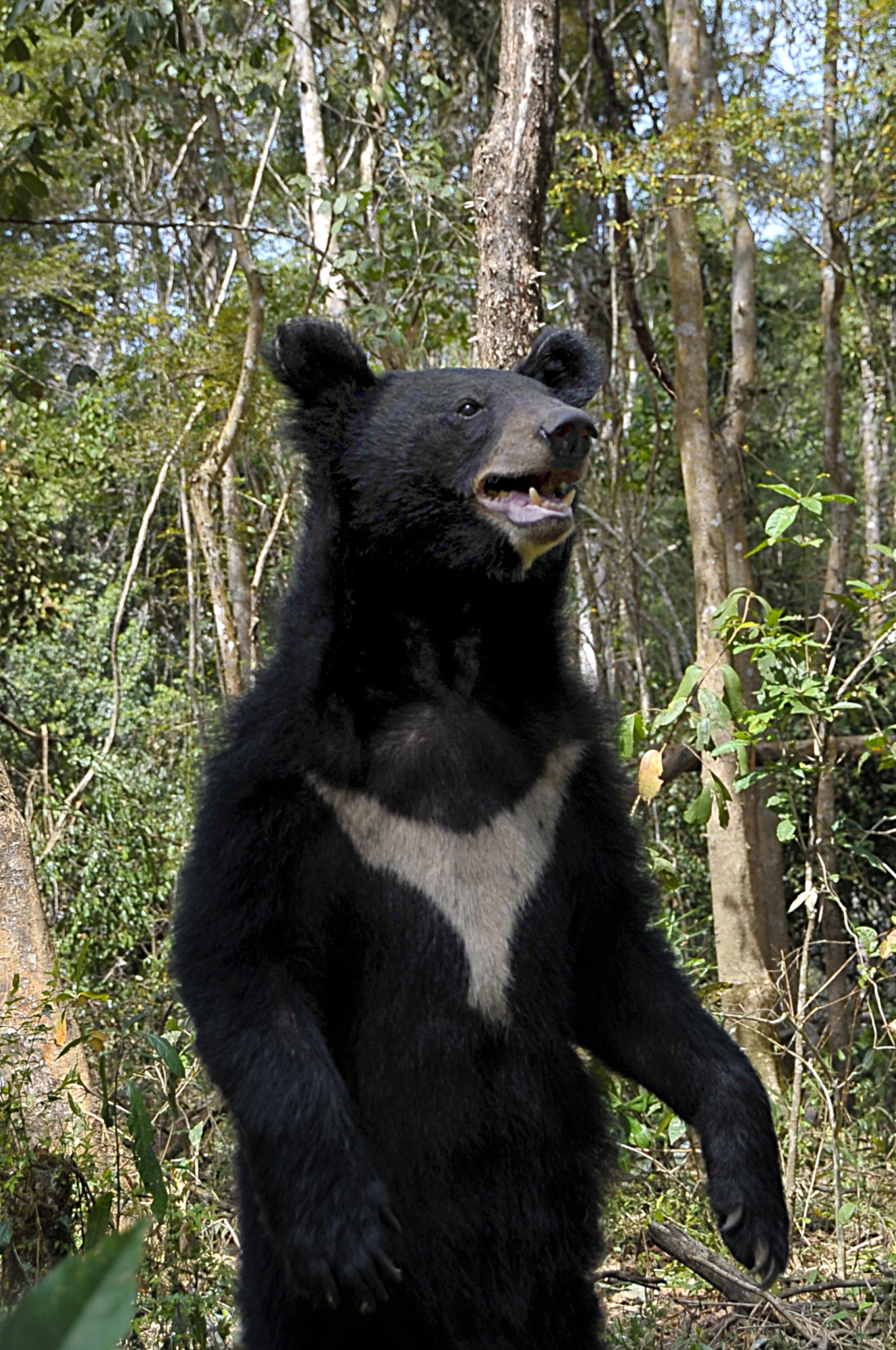
Asiatic black bear_U thibetanus_SE Asia rescue center_showing individually distinctive chest marking_Free the Bears
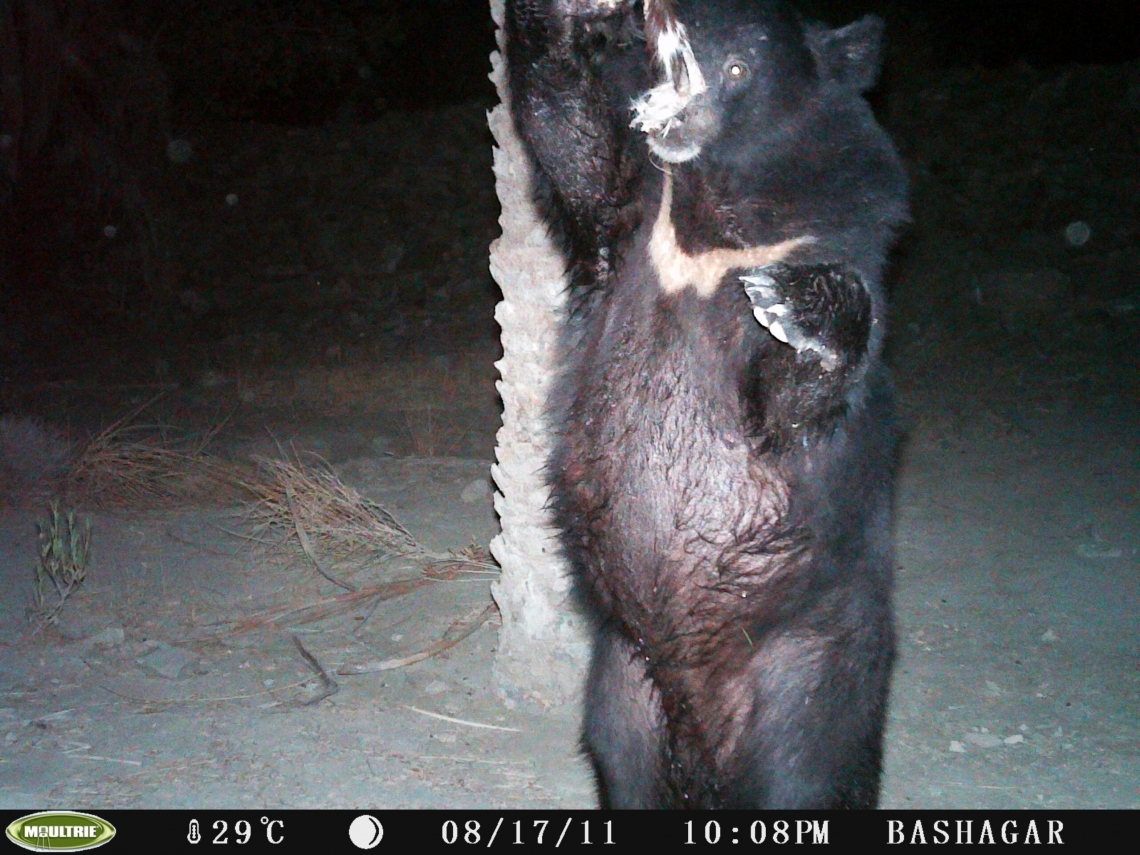
Asiatic black bear_U thibetanus_Iran camera trapped,_showing white chest blaze_Plan for Land Society
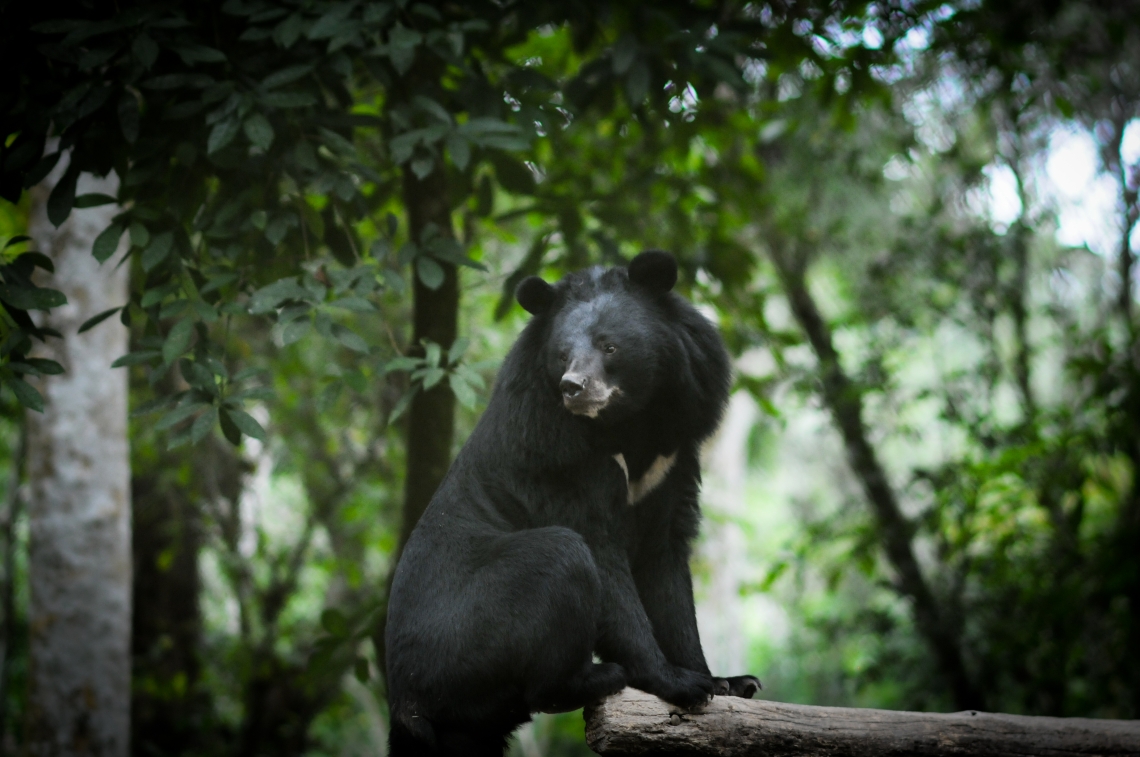
Asiatic black bear_U thibetanus_SE Asia rescue center_ruff on neck, large ears_Free the Bears

Asiatic black bear_U thibetanus_Khao Yai NP Thailand_short fur and ruff_D Ngopraset
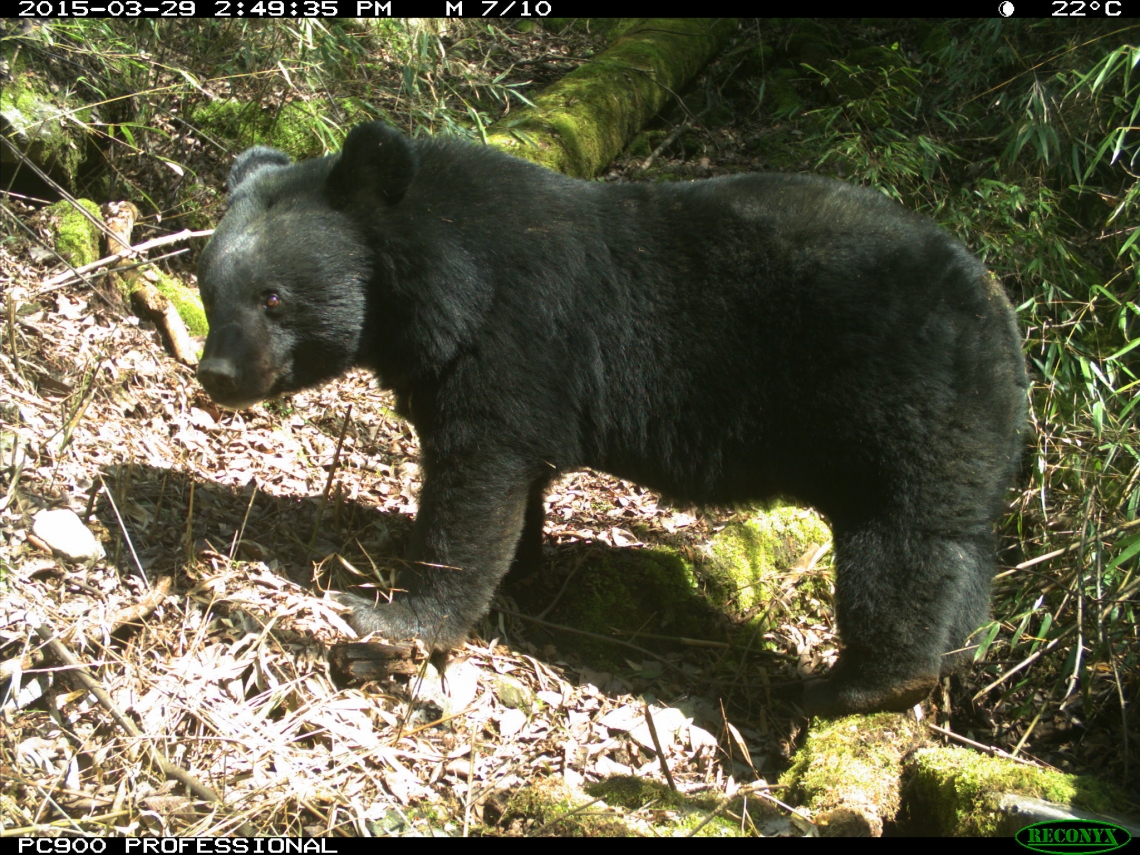
Asiatic black bear_U thibetanus_Sichuan China _heavy fur dark face_S Li

Asiatic black bear_U thibetanus_Thailand _short fur and ruff large ears_D Ngoprasert
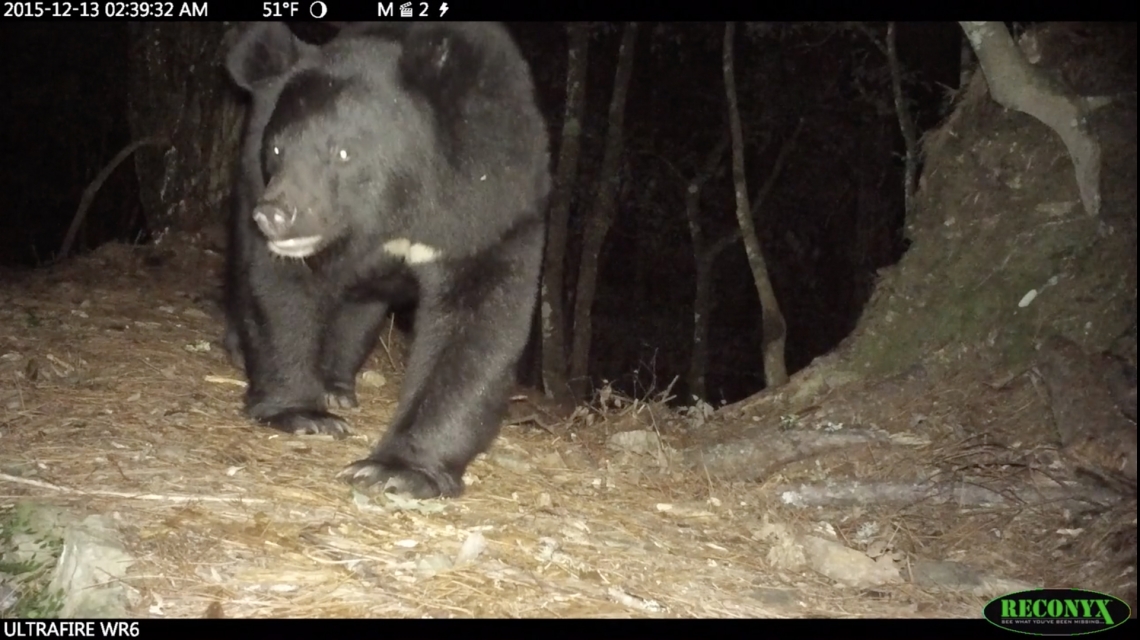
Asiatic black bear_U thibetanus_Taiwan_large ears, white chin_M-H Hwang
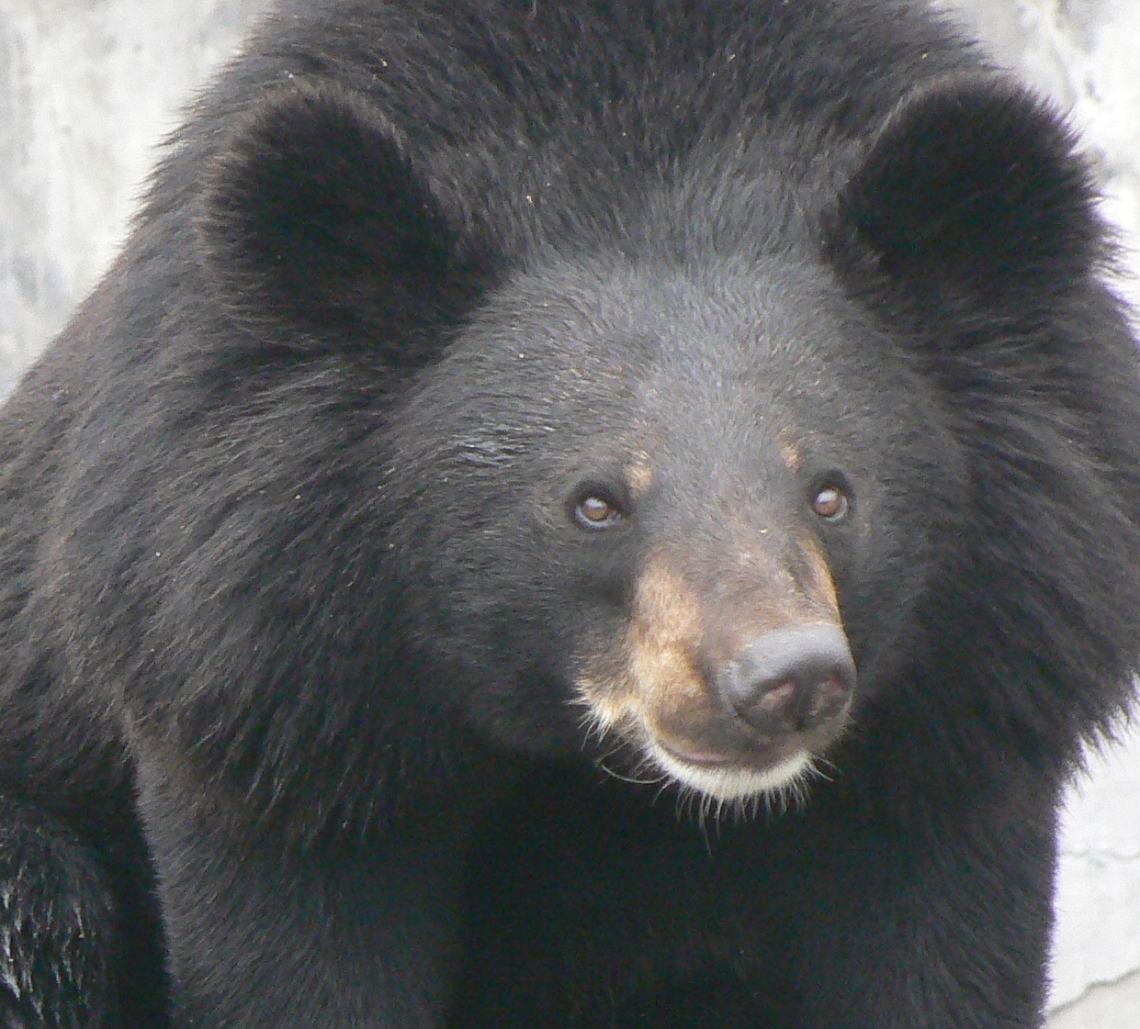
Asiatic black bear_U thibetanus_Sichuan China captive_ large ears_D. Garshelis
Distinctive behaviors: This species is an agile climber and feeds extensively in trees. When doing so, it pulls branches inward, breaking them, and then piling up these broken branches near the trunk, forming a “nest” on which they can stand and rest (although the intent is not to create a resting site). The presence of these tree nests and corresponding claw climbing marks on the tree trunk is a useful way of determining presence of the species; however, sun bears create similar-looking nests and claw marks. In a few sites (Taiwan, Nepal), Asiatic black bears also create nests on the ground, by intricately weaving vegetation such as grass or bamboo. The purpose of these ground nests is unclear, but it is curious that they have been observed in just a few places.
Asiatic black bears are generally more active during the day than at night, but they readily switch to greater nocturnal activity to avoid the heat of the day and to avoid people. In Iran, where temperatures soar to over 40ºC, they are known to use rock caves during the day, and come out only at night. (A similar behavior has been observed for sloth bears in India.) When feeding on crops or near settlements, they tend to be nocturnal. This species has attacked people in some areas, and is considered to be more aggressive than American black bears.
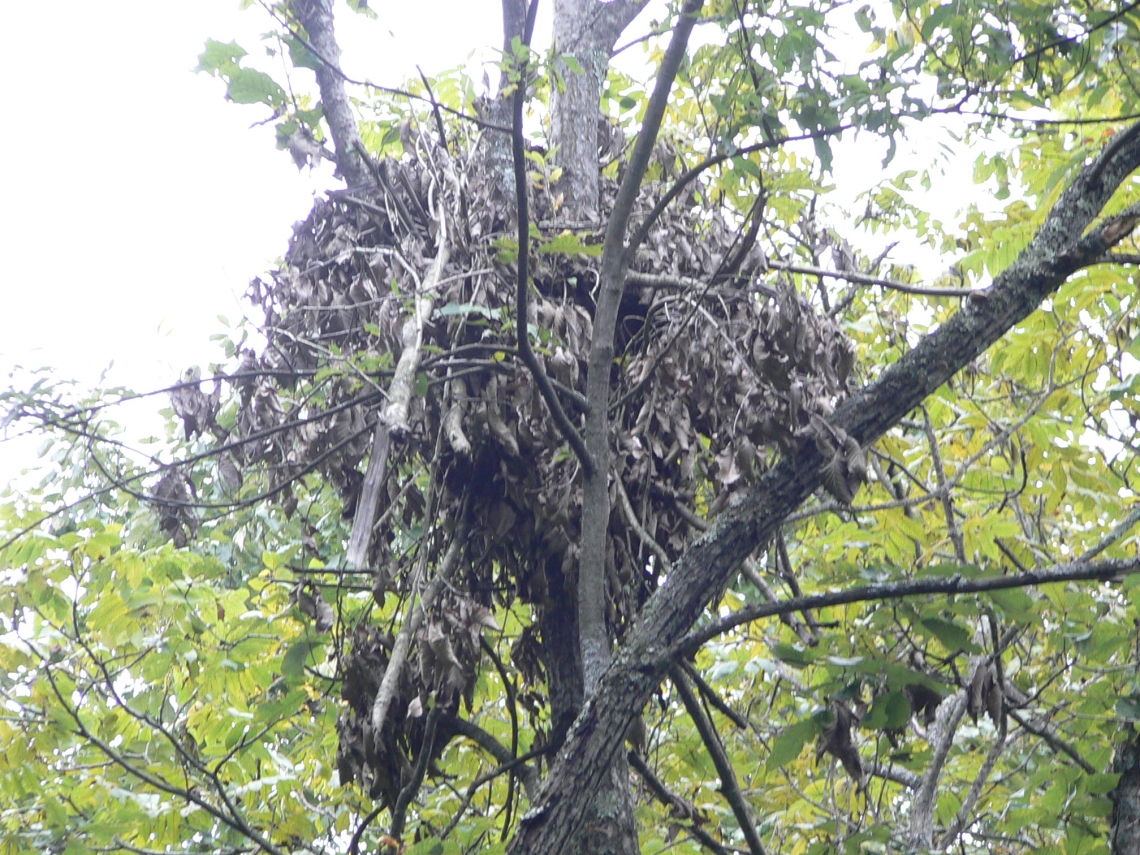
Asiatic black bear_U thibetannus_Sichuan China_feeding platform_D Garshelis

Asiatic black bear_U thibetanus_Lao PDF_4 hind foot claw mark on tree_D Garshelis

Asiatic black bear_U thibetanus_Meghalaya India_5 hind foot claw marks on tree_D Garshelis
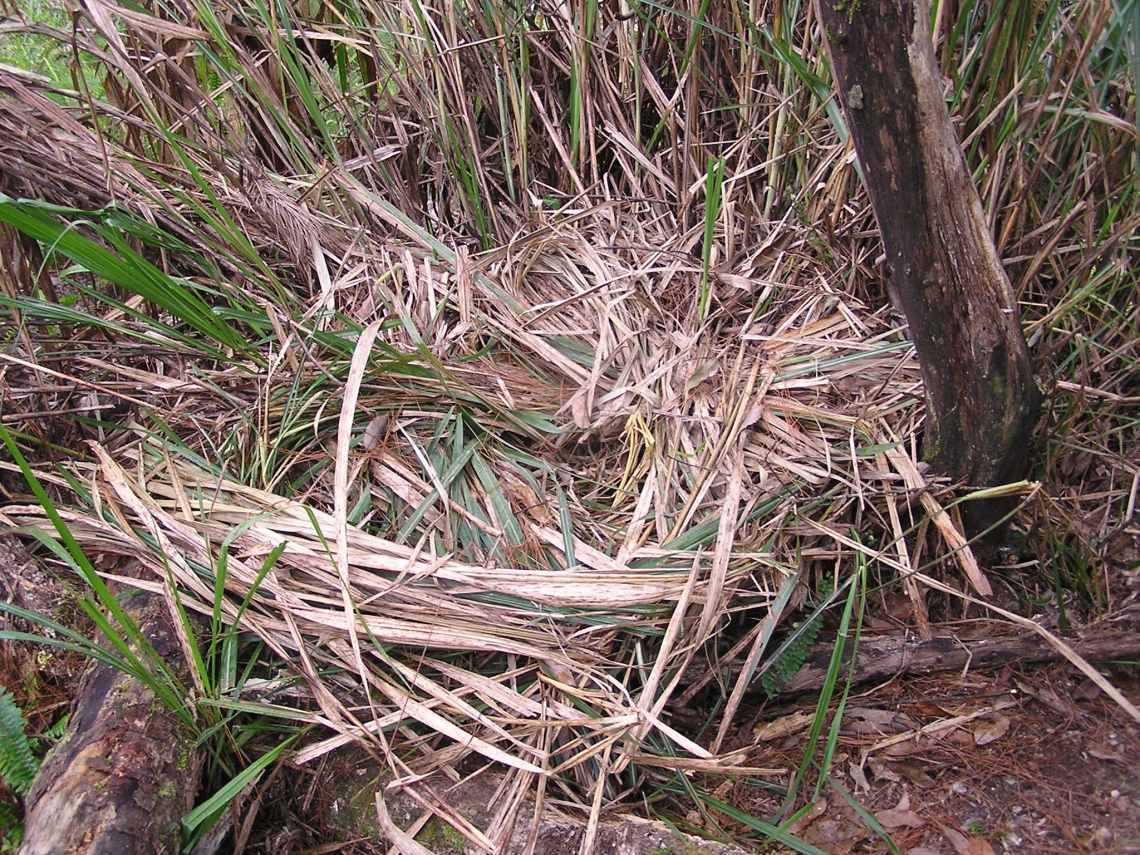
Asiatiic black bear_U thibetanus_Taiwan_ground nest_Mei-hsiu Hwang

Asiatic black bear_U thibetanus_Russian Far East_J Goodrich
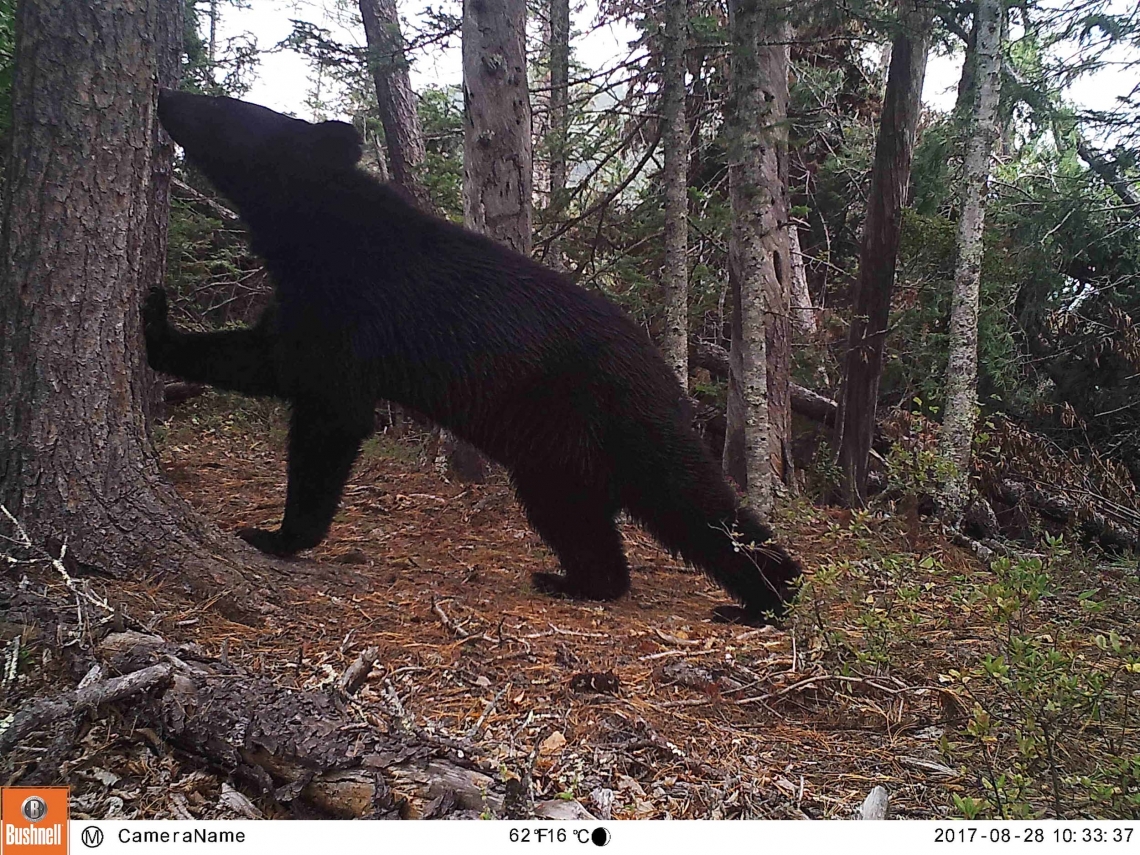
Asiatic black bear_U thibetanus_Russian Far East_sniffing scent mark_I Seryodkin
Asiatic black bear_U thibetanus_Sichuan China_scent marking tree_video by camera trap S Li